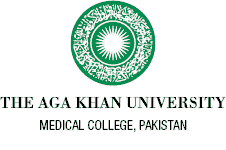Paediatric Physical Therapy programme: Module 1
MANAGEMENT OF NEUROLOGIC DISORDERS
1. CHILD WITH CEREBRAL PALSY
• What is CP? Definition
• Impairments – Primary, Secondary, and Associated
• Classification – GMFCS, MACS,
• Classification - Clinical Presentation
• Activity limitations seen in child with CP
• Screening
• Examination – GMFM and GMPM
• Diagnosis
• Prognosis – motor growth curves, milestones for prognostic determination of future walking ability and independent function
• Summary of evidence regarding management of impairments and activity limitation
• Medical management –overview of what is spasticity and its management
• Orthopedic surgical management techniques
• Gait deviations in spastic CP
2. CHILD WITH DOWN’S SYNDROME
- Hypertonia
- Classification
- General goals of PT
- Clinical presentation
- Activity limitation and participation
- Gross motor delays
- Sensory integration problems
- Screening in Down’s syndrome
- AAI symptoms ages 3-5
- Prognosis – motor development guideline in Down’s syndrome
- Hypotonic and lung development
- Interventions in Downs’s syndrome
- Ball training and treadmill training
- Postural control training
- Aerobic exercise
- Focus on obesity
- Foot pronation and orthotics – SMOS
- Communication/Learning style
3. DEVELOPMENTAL COORDINATION DISORDER
- Definition/Diagnostic criteria
- Long-term prognosis
- Clinical manifestations in a child with DCD
- Primary impairments including motor control and motor learning deficits
- Secondary impairments
- Pathophysiology
- Activity limitations including fine and gross motor, personal factors, environmental factors
- Role of PT
- Clinical assessment
- Intervention – task specific approaches and cognitive approaches
- Consultation re: physical activity
4. MYELODYSPLASIA
- Types
- Patho-physiology and embryology
- Etiology
- Perinatal management
- Impairments – Primary and secondary
- International Myelodysplasia study group criteria for assigning motor levels
- Neuro-Dysfunction including seizures, neurogenic bowel/bladder
- Age-specific examination and PT intervention
- Expected motor ability in Thoracic level Mylodysplasia, High lumbar level L1-L2, L3 level, L4 – L5 level, S1 level and S2-S3 levels
5. SPINAL CORD INJURY
- Epidemiology
- Advances in recovery
- Medical Diagnosis and acute management
- Medical complications, long-term medical management and prevention of secondary complication
- Spasticity and pain
- Skin breakdown/pressure ulcers
- Orthopedic management including impairments, classification, functional assessment, PT management, Bed Mobility/transfer, wheeled mobility and ambulation
6. BRACHIAL PLEXSUS INJURY
- Etiology/incidence
- Pathophysiology
- Impairments
- Natural history/prognosis
- PT examination – ROM, muscle strength and motor function
- Mallet’s classification
- PT goals
- Medical management
- Indications for timing of neurosurgery
- Orthopedic concerns/surgery
7. ACQUIRED BRAIN INJUREIS: TRAUMA, NEAR-DROWNING AND TUMORS
- Traumatic brain injury – pathology
- Secondary brain injury
- Prognosis
- Near drowning – epidemiology, pathology and prognosis
- Brain Tumors – epidemiology, pathology and prognosis
- PT treatment/management for a child with ABI
- Rancho pediatric levels of consciousness and Rancho levels of cognitive functioning (RLCF)
- Examination based on RLCF – ROM, muscle strength, motor performance postural control and balance and gait
- PT goals/treatment strategies as related to RLCF levels


